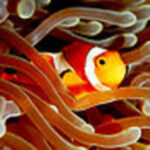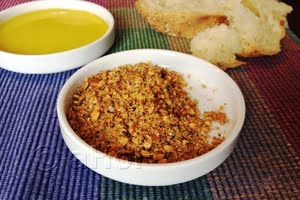Previously known as the STARFISH, this echinoderm’s name has changed to SEA STAR, as these multi-tube footed echinoderms really don’t share much in common with fish. Sea Stars are represented by three classes: the Asteroids, composed of Acanthaster, Protoreaster, Oreaster, Choriaster, Pentaceraster, Linkia, Fromia and Pentaster(ie.Crown of Thorns, Chocolate Chip, Reticulated, Doughboy, Red Fromia, Blue Linkia and Red Horned Sea Stars), the Ophiuroids, composed of by such stars as, Ophioderma, Ophiothrix, Ophiarachna, Astrophyton and Astropecten(ie. Green Brittle, Red Serpent and Basket Stars), and the Crinoids(ie. Sea Lillies and Feather Stars). Of these, basically the Ophiuroids and and some members of the Asteroid class are designated “reef safe” stars, though their husbandry issues and care need to be adhered to for their long term success in a captive environment.
Basically the Asteroids are a voracious eating machine which get too big for most tanks. They will consume anything that is in their way ie. corals, sponges, algae, other inverts, and if you have a prized Tridacna clam, your Asteroid star will love you for it, as it will devour your clam in no time at all. Their size is not to be ignored as they basically need a 1 per 100 gallon tank ratio. Many will not survive either as they will starve without proper feeding. Most of the Asteroids are represented by “knobby” bumps on their back which are of darker contrasting color than that of their body. When eating they are able to get into a mollusks shell with just the smallest crack in its shell. It then disperses its stomach through the opening of the clam and devours it, then returning its stomach back into its body cavity. These denisons are omnivorous with carnivorous tendencies and are NOT to be trusted with any reef, or marine tank with inverts, except for the Linkia and Fromia species, or you will be watching a star in a buffet line consuming and wiping out most living things in your tank.
Ophiuroids, on the other hand, like the Fromia and Linkia species above make wonderful additions to a reef tank. They eat detritus, algae, plankton and prepared foods. Some stars even filter feed. In addition to this, they stir-up and aerate sand beds which helps to suspend detritus in the pelagic area of your tank for your protein skimmer to remove, as well as ensures that your substrate doesn’t become calcified and hard due to over precipitation of calcium in your water. The only star I would be hesitant about putting in a reef tank is the opportunistic piscavore, the Green Brittle Star. It will trap and devour small fish!
The Crinoids and Gorgonocephalids make up the oldest class of echinoderms with fossils dating back to the Paleozoic era with some 500 species recognized thus far. These beauties are in no way acceptable to place in any tank due to their shipping and handling and very delicate food requirements. They are obligate planktivores which use their twenty arms armed with sticky pinnules to capture suspended foods at night. Reef keepers have tried to mimic their natural environment by trying to raise brine shrimp and other forms of plankton of various sizes to feed these magnificent creatures, but to no avail. Therefore these echinoderms are better left to be seen in the ocean.
As far as captive habitats are concerned, stars need a well established tank of atleast 6 months to ahve a chance at life in your tank. They also do not handle changes in salinity or large water changes well due to osmotic shock. The star is usually one of the first to show signs of stress in a tank making them very good biological water indicators for problems regarding water parameters. There is evidence suggesting that stars can be become affected by changes in synthetic salt brands, so be wary of this. One other very important thing to note, NEVER remove a star from the water as this makes its chances of survival in your tank grim to say the least.
Feeding with prepared foods once every week or two, will ensure it is getting fed. Target feeding by using a long stick and placing the food item in its arm is recommended. They can be trained to make their way to a particular feeding spot if you do this on a regular basis. A varied diet is also suggested to closer replicate its natural environment. This being said however, doesn’t imply that feeding by human intuition is the only way that stars will eat. They are again optortunistic feeders and forage for detritus, polychaete worm,fallen food, dead, or decaying matter and the list goes on.
Stars reproduce either sexually or by fragmentation. The latter experiment failed misserably a few years ago in trying to curb the Crown-of-Thorns star population. Because the population of the Napoleon Wrasse and the Giant Trident(only true predators of the Crown- of-Thorns star) is on the decline, due to the human removal, several countries have tried to reduce the population through other interventions. They tried to kill them by slicing them with a knife. However, basically what that did was create twice as many of them as they can reproduce by splitting in half.
Fungus and vibrio are a couple of the troublesome diseases which lead to mortality in stars. Selecting a healthy species from your local pet shop and the right environment in your tank will go along way in determining the fate of your star.
Reclusive and cryptic, interesting and appealing are the stars. With the proper care and handling, can become an important and stunning addition to your collection of marine inhabitants to enjoy for a long time…




